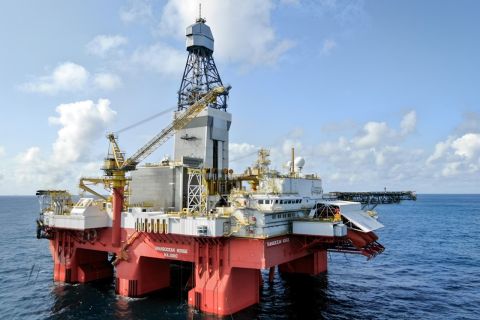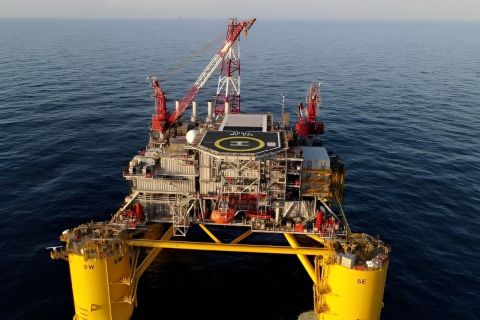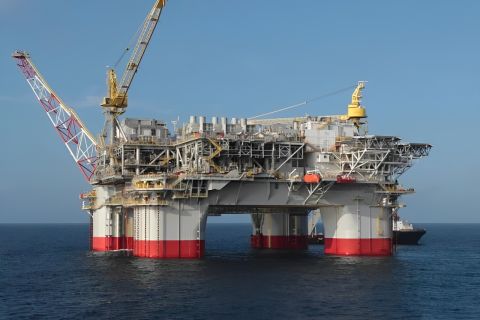Erez N. Allouche, Ph.D., P. Eng., and Mike E. Baumert, Ph.D., P. Eng., Louisiana Tech University, Ruston, Louisiana
A new tool has been developed that enables directional drill rig operators to monitor and regulate the pressures placed on drill pipe during the pilot bore, and on the product pipe during reaming and pullback operations.
The tool makes use of one of three HDD monitoring cells, depending on the type of installation, product pipe, and drill rig, and is inserted into the drill string between the reamer and product pipe pull head. An array of sensors, mounted within a protective casing, collect data on tensile installation loads and mud pressures. The data collected by the sensors is stored on a memory chip placed onboard the platform, thus creating a permanent electronic record of the installation. This data can be used by contractors, consultants and owners for quality control purposes and the improvement of design models and construction practices.
In addition, real-time information can be provided to the operator, giving him or her the opportunity to detect potential problems in a timely manner so that appropriate mitigation measures can be taken, such as adjustment of reaming rates, pumping rates or the composition of the drilling mud mixture; a change of borehole tooling; or modification of the construction sequence.
The goal here is to discuss the merit of real-time borehole measurements, present selected examples of field data collected by the new monitoring tool, and demonstrate how this sort of information is a valuable resource to parties associated with large-scale HDD crossings.
Lack of transparency
One of the key drawbacks of many pulled-in-place trenchless construction methods, such as HDD and pipe bursting, is in their strength – the minimization of open-cut excavations. The concealed nature of a trenchless construction process increases the risk associated with adverse soil conditions, uncharted utilities, as well as other manmade or natural obstacles along the proposed alignment.
Similarly, the development and implementation of quality control and quality assurance protocols has been significantly hindered, as access to the pipe product is very limited. In many cases, even if a problem is discovered during or shortly after the installation, little can be done to minimize damage. Examples of these problems include:
- Overstressing or even rupture of the pipe product due to excessive pulling load
- Heaving the roads or migration of drilling fluids to the surface due to the development of significant pressure in the borehole and/or hydraulic fracturing
- Jamming of the drill string and/or the pipe product in the borehole as the capacity of the drilling rig/pipe bursting rig is matched.
To address and help prevent these problems, four prototype Borehole Monitoring Systems (BMS), with working capacities ranging between 30,000 lb and 300,000 lb, were developed at the University of Western Ontario, and tested on over 30 commercial HDD installations. The BMS make use of the smart load cell approach, which provides increasing quality control to the contractor and quality assurance to the client, while avoiding most of the disadvantages associated with weak-links. Three HDD monitoring cells, denoted I, II, and III (Figure 1) were developed. They are inserted into the drill string between the reamer and pipe pull head (Figure 2). Their respective capabilities are as follows:
- Load cell I can be used to measure tensile HDD installation loads of up to 222 kN as well as downhole mud pressure up to 690 kPa, with data downloaded from the load cell to a laptop computer at the end of the installation using a conventional cable connection.
- Load cell II can be used to measure tensile HDD installation loads of up to 36 kN using radio communication to exchange data between the load cell and a laptop computer.
- Load cell III is designed for measuring loads up to 670 kN and mud pressures up to 1034 kPa, relying on a wire transmission line for communication.
Load cells II and III both provide real-time data display as well as complete data download at the end of the installation. Within the load cell there is an electronic system that converts the strain measurements to loads, and records them as a function of time.
When the installation has been completed, the data can be downloaded into a laptop computer and presented using Excel or other commercially available spreadsheet software. Alternatively, the load cell data can be transmitted during the installation in real-time via a radio transmitter to a display unit at the drilling rig. Based on the manufacturer’s maximum allowable loads, the installations can be categorized as either:
- Acceptable – allowable stresses were not exceeded during the installation.
- Fair – a few minor violations of maximum allowable stresses.
- Poor – multiple minor to moderate violations of maximum allow-able stresses.
- Unacceptable – gross violation of maximum allowable stresses.
Based on the rating and specific site conditions, the installation can then be declared to be: 1) acceptable; 2) acceptable but the contractor will be subject to a financial penalty due to poor performance; 3) unacceptable. The proposed system will enable expert judgment based on objective data rather than an instantaneous maximum loading condition to determine the fate of the installation. Contractors will realize substantial savings due to a reduction in the amount of rework, while owners will benefit from a high quality control/quality assurance (QC/QA) system that is resistant to fraud or tampering.
Additionally, the proposed system is not only fair, but it also provides excellent feedback to the operator regarding the impact of his/her practices on the load applied to the pipe. Based on this feedback, operators will be able to continuously improve their skills and understanding of the interaction between subsurface conditions, borehole geometry, drilling fluid composition, and the force required to pull the product through the borehole.
Monitoring cell data
Load cell I was employed on a total of 19 commercial installations. The longest installation monitored was a 226-m installation of 223-mm outside diameter (OD), 4.8-mm wall Yellowjacket steel gas distribution pipe. The largest diameter pipe installation monitored was a 152-m installation of 273-mm OD, schedule 40 Yellowjacket mainline gas pipe. The addition of pressure monitoring capability is a recent development for this load cell, with four installations monitored to date for combined mud pressure and tensile load. Load cell II was utilized on six small installations, primarily 51-mm HDPE gas line. Because of its load limitation of 36 kN, this load cell is restricted to small-diameter installations or relatively short installations of larger pipe product. Load cell III is sized for rigs of up to 670 kN thrust capacity, and has yet to be used in the field.
Downloaded data from all load cells can be easily presented in graphical form for post-installation analysis. Figure 3 is a graph of the data downloaded after the completion of a typical bore using the monitoring cell (pull load only). The 157-m bore was relatively straight and level to an average depth of 1.2-m in silty clay soil. Pull load data was collected at 10-second intervals. Examining the graph, a number of observations can be made. The peaks represent data recorded during rod pullback, while the low points correspond to readings taken when drill rods were being transferred to the rack and the drill string was stationary. There are 52 peaks on the graph corresponding to the 52 drill rods pulled back. The load on the pull head increased linearly with the length of pipe in the bore at a slope of approximately 0.28 kN/m, with a maximum load exerted on the pipe of 50.4 kN towards the end of the pull.
Figure 4 is a graph of the mud pressure data downloaded after the completion of a bore using the monitoring cell equipped with a 19-mm, 689-kPa pressure transducer. Pull load data was also collected on this installation but was not shown on this graph for clarity. The 155-m bore was relatively straight and level to an average depth of 1.2 m in clay. Mud pressure data was collected at 10-second intervals. Drilling mud was pumped through the drill string to the reamer during rod pull back, with flow halted during drill rod removal (pumping pressure = 0 kPa). The graph reflects this, with peaks representing mud pressures recorded during rod pullback, with active pumping pressure while the low points correspond to readings taken while drill rods were being transferred to the rack and mud flow was halted. These lows are well above zero, indicating that the bore remains pressurized once mud pumping pressure ceases. There are 50 peaks on the graph corresponding to the 50 drill rods pulled back. The highest mud pressure recorded of 270 kPa occurred at the early stages of the pull.
Mud pressure is a significant parameter from a number of perspectives. From an operational point of view, mud pressure must be maintained within a range with defined lower and upper limits. The lower limit is defined by the minimum pressure required to maintain borehole stability and prevent borehole collapse. The upper limit is determined by the pressure that will cause frac-out, the inadvertent escape of drill mud out of the bore into the surrounding formation and possibly to the surface. Within these limits, the pressure must be high enough to maintain turbulent flow sufficient to transport drill cuttings out of the bore and prevent their settlement to the bottom of the bore. The borehole monitoring system collects, stores and transmits mud pressure data in near real-time manner to the operator and drilling engineer, thus assisting in maintaining the pressure in the borehole within the permissible range.
Conclusions
The importance of QC/QA in HDD operations is increasing, but number of HDD firms in North America that have an official quality management program remains relatively low. This could be due to the following factors:
- The concealed and remote nature of the HDD process makes it difficult to identify problems before they arise and in some cases even after they are encountered. Even if a problem was identified during the construction process, the corrective actions that are available are limited.
- Lack of means to perform direct measurements of the quality of the installation process.
Nevertheless, there is growing recognition of the need to develop and implement a voluntary unified QC/QA standard in order to reduce the risks associated with the utilization of the HDD method, and subsequently ease its acceptance by the engineering community.
A key obstacle is the difficulty in obtaining direct objective feedback as to the contribution, or lack thereof, of various practices to the quality of the installation. There have been a number of recent efforts aimed at developing means and measures to promote project quality delivery prior to, during and following an HDD installation. The most notable of these is the development of weak-link devices, designed to protect PE pipes from damage due to excessive tensile force. However, if the weak link detaches, the construction process is terminated, resulting in costly remediation measures to the contractor and potentially to the owner. Additionally, many contractors question the fairness of this approach, since it may punish them not only for poor construction practices but also for adverse subsurface conditions and undersized products.
An alternative approach to controlling tensile forces during HDD installations is the utilization of smart load cells. These devices measure and record the installation loads during the construction process. Based on these records and an assessment of the local subsurface conditions, the installation can be accepted or rejected by the owner. The data collected are also an invaluable asset for the training of drill operators.
Acknowledgment
Based on a paper presented at the ASME’s International Pipeline Conference, October 4-8, 2004, Calgary, Alberta, Canada.
The authors
Erez N. Allouche, Ph.D., P. Eng., is a Professor of Civil Engineeirng Enginering at Louisiana Tech University, Ruston, Louisiana. He can be reached at 318-257-2852 or allouche@latech.edu.
Mike E. Baumert, Ph.D., P. Eng. is a Professor of Civil Enginering at Louisiana Tech University, Ruston, Louisiana. He can be reached at 318-257-2852 or at baumert@coes.latech.edu.
Recommended Reading
E&P Highlights: Aug. 26, 2024
2024-08-26 - Here’s a roundup of the latest E&P headlines, with Ovintiv considering selling its Uinta assets and drilling operations beginning at the Anchois project offshore Morocco.
OMV Makes Gas Discovery in Norwegian Sea
2024-08-26 - OMV and partners Vår Energi and INPEX Idemitsu discovered gas located around 65 km southwest of the Aasta Hansteen field and 310 km off the Norwegian coast.
E&P Highlights: Sep. 2, 2024
2024-09-03 - Here's a roundup of the latest E&P headlines, with Valeura increasing production at their Nong Yao C development and Oceaneering securing several contracts in the U.K. North Sea.
Breakthroughs in the Energy Industry’s Contact Sport, Geophysics
2024-09-05 - At the 2024 IMAGE Conference, Shell’s Bill Langin showcased how industry advances in seismic technology has unlocked key areas in the Gulf of Mexico.
Chevron Boosts Oil, NatGas Recovery in Gulf of Mexico
2024-09-03 - Chevron’s Jack/St. Malo and Tahiti facilities have produced 400 MMboe and 500 MMboe, respectively.





